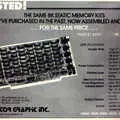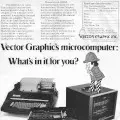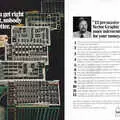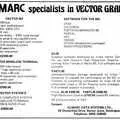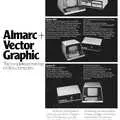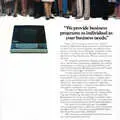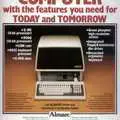
Vector Graphic Advert - July 1977
From Byte - The Small Systems Journal
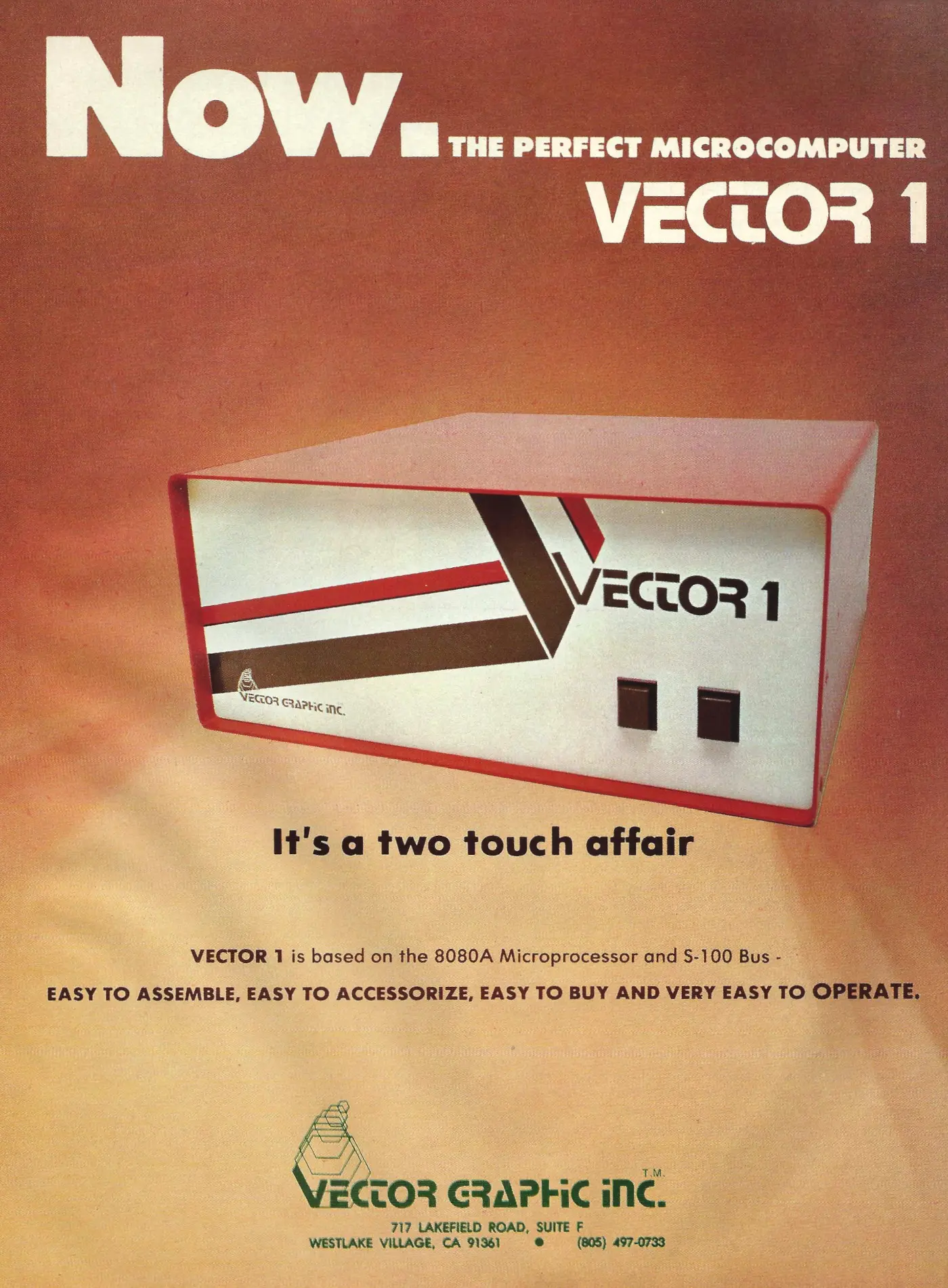
Now. The Perfect Microcomputer: Vector 1 - it's a two-touch affair
Founded in November 1976 by Lore Harp and Carole Ely as one of the very first female-led microcomputer companies[1], it didn't take long for Vector Graphic, which was already a million-dollar company thanks to its sales of well-regarded S-100 memory boards[2], to go from making 8K memory cards to complete systems, as shown by this advert from July 1977.
The Vector 1 was the company's first real computer, and was designed by Lore's husband Bob Harp. It was based on Intel's 8080A on an S-100 bus with 18 card slots.
Deliberately pitched between "home computers" like the Apple II and expensive mainframes, it retailed for $849, or about £5,130 in 2025.
The advert's quote - "it's a two touch affair" - is a reference to the simplicity of the Vector 1's interface compared to many other computers of the day, such as the IMSAI 8080, which were packed with lights and switches.
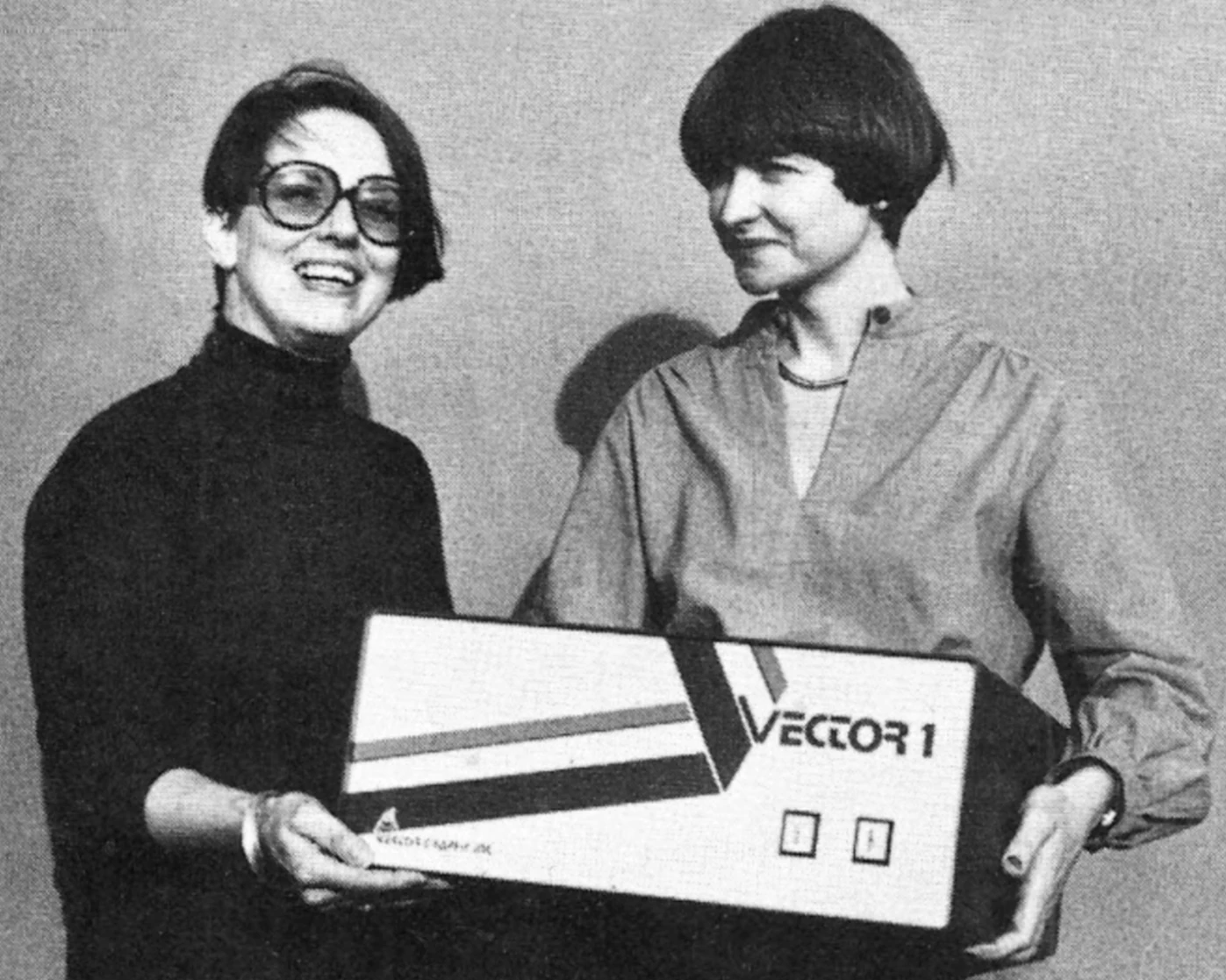
Lore Harp and Carole Ely holding their Vector 1 microcomputer. Source: Vector Graphic
According to a quote on old-computers.com[3] from Lore Harp, this was a deliberate move to simplify the user interface, where "User friendliness became an important design element", although it has also been suggested that this was done as a cost-saving measure[4].
This wasn't totally unique though, as other machines like SWTPC's 6800, from January of the same year, had also simplified to just a few buttons.
However, in order not to alienate users who still liked the switches-and-lights interface, the Vector 1 came with ten DB-25 sockets on the back so that users could plug in their own.
Vector went public with an IPO in 1981, making Lore Harp only the second female founder to head a Nasdaq company, an achievement all the more impressive given the hostile and patriarchal nature of the industry and the competition at the time.
By 1982, the company was making over $36 million in sales with $2.4 million profits, and had 425 employees[5].
However, despite being visited by IBM at one point with a view to selling Big Blue their Vector micros as part of an OEM deal, but realising IBM's real intentions to build its own micro and that the company had maybe a year left before its market disappeared, it was late in moving with the rest of the industry to 16-bit processors.
It also stuck with its legacy CP/M operating system, which became a significant drawback once IBM's 5150 PC had been released and the market was dragged to Microsoft's MS-DOS.
By 1982, Lore Harp had resigned as CEO, but was asked to return in 1983 as the company - which thanks to its reputation for quality was still going - was nevertheless losing more and more market share.
In 1984 she left for the last time, whilst the company limped on for a year before filing for Chapter 11 in 1985 and ultimately going bankrupt in 1987[6].
Date created: 26 July 2013
Last updated: 17 October 2025
Hint: use left and right cursor keys to navigate between adverts.
Sources
Text and otherwise-uncredited photos © nosher.net 2025. Dollar/GBP conversions, where used, assume $1.50 to £1. "Now" prices are calculated dynamically using average RPI per year.
